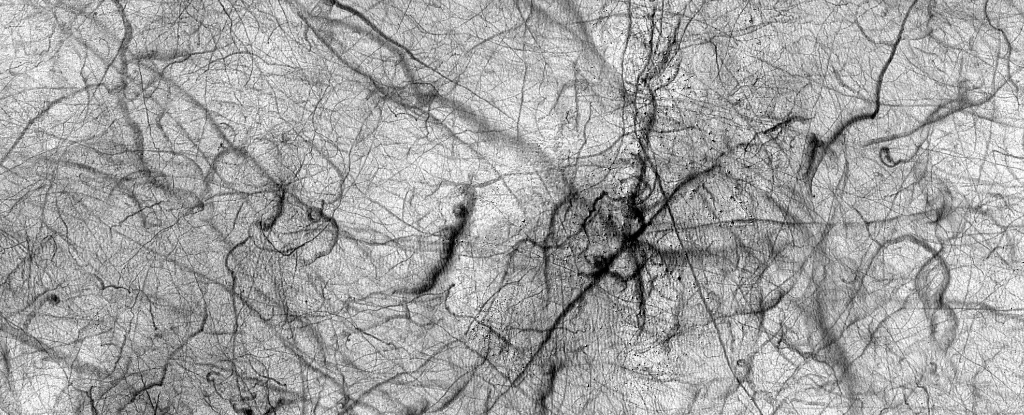Mars, the fourth planet in our solar system, continues to captivate scientists and enthusiasts alike with its arid landscapes and geological complexity. Known as the ‘Red Planet’ due to its striking reddish hue—a result of iron oxide on its surface—Mars presents an atmosphere that is both thin and intriguing. Comprising approximately 95% carbon dioxide, with traces of nitrogen, argon, and oxygen, this atmosphere possesses a density that is merely 1% of Earth’s. Such a stark contrast renders Mars inhospitable to human life without advanced life-support technologies.
The planet boasts a variety of geological features, from sprawling plains and imposing volcanoes like Olympus Mons to the extensive canyon system known as Valles Marineris. Geological studies suggest that Mars was once adorned with liquid water, indicative of a past that may have supported life. Yet, the current frigid climate—averaging around -60 °C—raises questions about the planet’s capacity to foster life today.
One of the most compelling phenomena observed on Mars is the formation and activity of dust devils. These swirling columns of dust and air, reminiscent of tornadoes on Earth, develop when the Martian surface experiences rapid heating. This process generates rising warm air, which drags along dust particles into a revolving column that moves across the desolate landscape.
The newly captured imagery from NASA’s Mars Reconnaissance Orbiter, especially the scene within the Haldane Crater, provides a visual testament to the relentless action of these dust devils. They can vary tremendously in size and duration, from small, harmless whirlwinds to massive spirals extending several kilometers that may persist for hours. This variability offers a fascinating area of study for scientists observing Mars’ weather patterns.
Dust devils play a crucial role in redistributing Martian dust across the planet. This redistribution is essential for understanding not only the Martian weather but also larger climatic systems. As they sweep across the surface, dust devils can either deposit fine particles on various surfaces, including solar panels, or clear them away through their powerful winds. While this phenomenon can significantly lower the efficiency of solar panels by obstructing sunlight, it can also serve as a natural cleaning mechanism.
Researchers are particularly interested in tracking the trails left by these dust devils. The detailed imaging allows scientists to analyze the rate of dust accumulation across Mars. Understanding this accumulation is vital for the planning and safeguarding of future exploration missions, particularly those that rely heavily on solar energy. As technology advances and more missions are planned, grasping these dynamics can improve solar panel efficiency and overall mission success.
The persistent study of Martian dust devils reflects a broader commitment to uncovering the mysteries of our neighboring planet. This research not only enhances our understanding of Mars’ atmospheric processes but also prepares us for challenges that future missions may face. The tools and techniques developed to analyze these dust patterns may ultimately inform strategies for both robotic explorers and, someday, human settlers.
As we continue to unravel the secrets of Mars through images and data collected by spacecraft like the Mars Reconnaissance Orbiter, the interplay between dust devils and the Martian environment remains a fascinating topic. Each revelation not only refines our scientific knowledge but also cultivates our curiosity about the potential for life and the history of our celestial neighbor. Thus, the study of Martian dust devils serves as a microcosm of our larger endeavor to understand, explore, and perhaps one day inhabit the Red Planet.


Leave a Reply